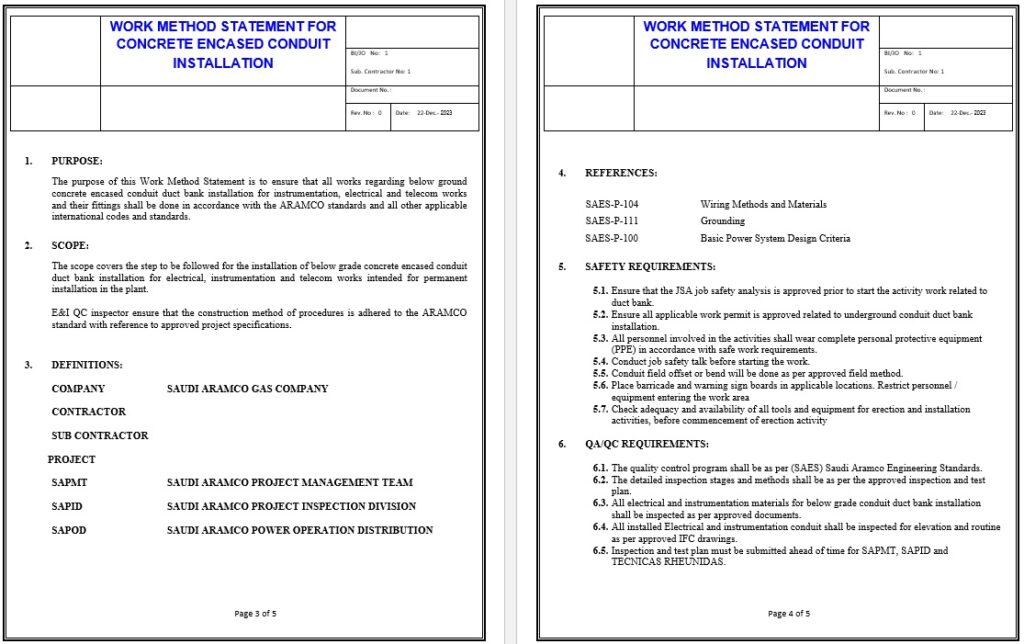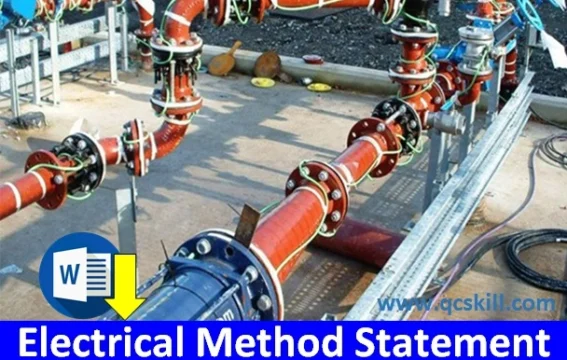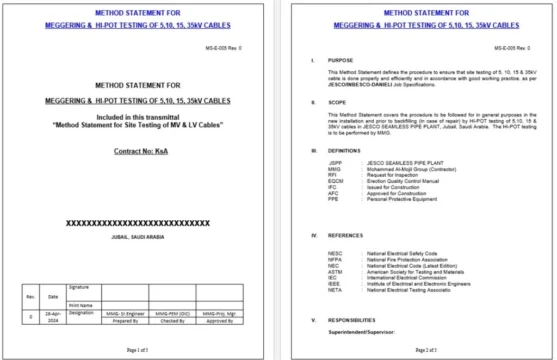
- File Name: WMS – CONCRETE ENCASED CONDUIT DUCT BANK
- File Type: MS Word
- File Size: 96 KB
This MS word provides a method statement for duct bank construction for the Neat Khuff Condensate Fractionation Project in Saudi Arabia. It outlines the responsibilities, safety measures, equipment, materials, and sequence of operations for constructing two types of duct banks: direct buried type (Type DB) and encased buried type (Type EB).
This Method Statement to be followed for the installation of below grade concrete encased conduit duct bank installation for electrical, instrumentation and telecom works intended for permanent installation in the SAUDI ARAMCO PROJECT.
The purpose of this Work Method Statement is to ensure that all works regarding below ground concrete encased conduit duct bank installation for instrumentation, electrical and telecom works and their fittings shall be done in accordance with the ARAMCO standards and all other applicable international codes and standards.
E&I QC inspector ensure that the construction method of procedures is adhered to the ARAMCO standard with reference to approved project specifications.
FAQ:
What is a concrete encased duct bank?
Duct bank electrical systems consist of underground concrete encased vessels used for laying and protecting cables incased in PVC pipes or conduits.
What conduit can be encased in concrete?
PVC conduit shall be permitted to be encased in concrete … A concrete-encased electrode shall consist of at least 6.0 m (20 ft) of either of the following: One or more bare or zinc galvanized or other…
Duct Banks and how do they work?
A duct bank (or sometimes conduit bank) is a protective system for utility wires to keep them safe underground. It is made from PVC conduits, which are then protected further by being encased in concrete. Duct banks are used to protect utility wires such as those used for electricity or telecommunications.
What is the difference between a trench and a duct bank?
Cost-Effectiveness: Trenches are often more cost-effective than duct banks as they require less material and labour for installation. This makes them an attractive option for projects with budget constraints. Flexibility: Trenches offer greater flexibility in terms of cable placement and routing.
How to calculate concrete encasement?
If you know the length, width, and height of the space that you want to fill with concrete, then you can plug those measurements into a simple formula (length x width x height = volume) to get the precise quantity of concrete needed for a project.






